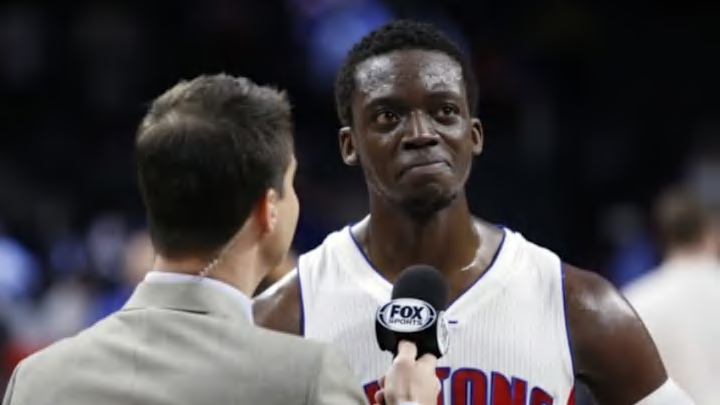
The 2015 NBA free agent market is winding down after an electric start. Much of the big money is off the table, with the exception of a certain small forward from Akron.[1. Ed. He’s TOTALLY signing with San Antonio for the minimum.] I decided to take a look at what NBA teams having been paying for so far, and see if there was a strong detectable pattern.
There are a few different ways to look a contract size, an even somewhat more challenging issue this year given the upcoming jump in the salary cap. The salary measures reviewed were average annual salary, total guaranteed money and the percent of the salary cap over the length of the contract. Each has it’s own merits. It appears from a player’s perspective the idea of accepting shorter deals in order to hit the market earlier under the new higher salary cap has not proved widely popular, and, in fact the relationship between average salary and guaranteed total salary is still strong, with only a few notable outliers [2. Guaranteed salary is estimated with a flat salary structure over the contract though many may have escalation clauses over the contract, or declining structures. Team option years or non-guaranteed years are not included].
Below is a plot of reported deals through Monday night of per year salary and total guaranteed salary, most contract estimates via Marc Porcaro, with updates via Woj as they happened. Dwyane Wade and Amir Johnson are the outliers, though for different reasons.

At some point LeBron is likely to officially sign a two year guaranteed deal and wreck the relationship. But, to date, it looks pretty close.
Some Simple Models
Looking at sixty signings so far I wanted to keep the models fairly simple. This exercise is not intended to say what teams should be paying players for, or necessarily predictive into the future, just to break down what teams have been paying for so far. I looked at both the overall metrics Real Plus Minus from ESPN (RPM) and Box Plus Minus (BPM) using the split between offense and defense on both. I also looked at other advanced box score metrics from Basketball Reference, age, changing teams, player options, and team options.
While there were better fitting, and likely overfit, models, there were a few clear patterns that emerged from all three of the models. The simple versions of the regression models explained approximately 80% of in sample variation, slightly less for the model trained on the percent of cap space;
- You don’t want to lose playing time in a contract year. Minutes played has had the strongest relationship to the size of the contract signed so far. Accounting for between 30-36% of salary explained by the model. In the annual salary model every hundred minutes played correlated to $700,000 per year on contracts signed to date.
- Offensive BPM has been the most closely related performance variable to salary so far, slightly closer than Offensive RPM.
- Neither of the defensive sides of these metrics has had a strong relationship to salary signed this summer.
- Age is just a number that helps determine how much a player gets paid. There is an inverse relationship between age and salary controlling for these other factors. There relationship is strongest for total guaranteed money, see Wade, Dwyane. It less strong if percent of cap space is used.
- Big men are getting paid more. This can be modeled a couple of different ways either as a factor variable or numeric variable by position, or using defensive rebound percentage. Below is an effect plot on per salary by position as a factor variable on the model.

- Players changing teams have generally gotten a bit less than those re-signing. Outside of DeAndre Jordan and LaMarcus Aldridge the availability of players to be signed elsewhere as been more a sign of a weaker market for the player.
- Similarly, team options on the end of contracts didn’t show up a boost to annual pay, even though that is a clear concession to the team’s flexibility. Perhaps indicating less player leverage in those deals.
Below are the model results compared to actual annual salary believed to be agreed per year in millions. The model uses minutes played, O-BPM, position, age and position:

The model is, again, not attempting to quantify what a team should have paid, or what a player should have received. It does, however, call attention to some of the more out of step deals, like Wade’s one year deal [3. It looks low in the guaranteed contract model] or the Rajon Rondo deal. Teams paying more could simply know something the model doesn’t pick up about a player, but there is always the question of who were they bidding against?
